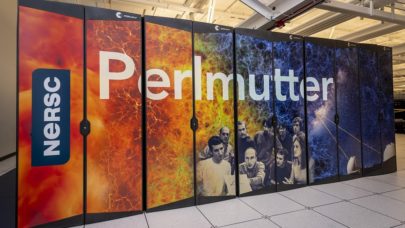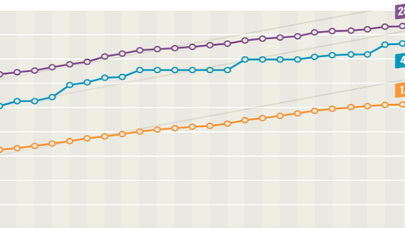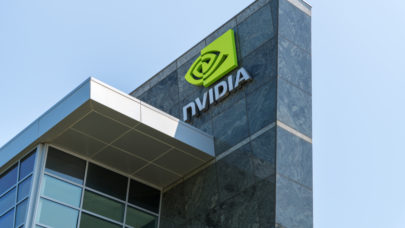
Gordon Bell Special Prize Goes to LLM-Based Covid Variant Prediction
November 17, 2022
For three years running, ACM has awarded not only its long-standing Gordon Bell Prize (read more about this year’s winner here!) but also its Gordon Bell Spec Read more…

Top Supercomputers to Shake Up Earthquake Modeling
September 29, 2022
Two DOE-funded projects — and a bunch of top supercomputers — are converging to improve our understanding of earthquakes and enable the construction of more Read more…

Inside the Gordon Bell Prize Finalist Projects
September 7, 2022
The ACM Gordon Bell Prize, which comes with a $10,000 award courtesy of HPC luminary Gordon Bell, is widely considered the highest prize in high-performance com Read more…

AI for Science – Early Lessons from NERSC’s Perlmutter Supercomputer
April 28, 2022
Roughly a year ago the National Energy Research Scientific Computing Center (NERSC) launched Perlmutter, which was hailed at the time as the “world’s fastest AI supercomputer” by Nvidia whose GPUs provide much of Perlmutter’s power. Since then, NERSC has been aggressively ramping up its mixed AI-HPC workload capability – software, early science apps... Read more…

Top500: Fugaku Still on Top; Perlmutter Debuts at #5
June 28, 2021
The 57th Top500, revealed today from the ISC 2021 digital event, showcases many of the same systems as the previous edition, with Fugaku holding its significant lead and only one new entrant in the top 10 cohort: the Perlmutter system at the DOE Lawrence Berkeley National Laboratory enters the list at number five with 65.69 Linpack petaflops. Perlmutter is the largest... Read more…

Berkeley Lab Debuts Perlmutter, World’s Fastest AI Supercomputer
May 27, 2021
A ribbon-cutting ceremony held virtually at Berkeley Lab's National Energy Research Scientific Computing Center (NERSC) today marked the official launch of Perlmutter – aka NERSC-9 – the GPU-accelerated supercomputer built by HPE in partnership with Nvidia and AMD. Read more…

With Strong Q2 Earnings, Nvidia’s System Play Comes Into Focus
August 20, 2020
Nvidia has announced its Q2 2021 earnings: $3.87 billion, outperforming analyst expectations amid a global pandemic and showing signs of a successful (and ongoing) reorientation of its business strategy. Compared to Q2 2020, earnings were up 50 percent; compared to Q1 2021, up 26 percent. Read more…

- Click Here for More Headlines

Whitepaper
Transforming Industrial and Automotive Manufacturing
In this era, expansion in digital infrastructure capacity is inevitable. Parallel to this, climate change consciousness is also rising, making sustainability a mandatory part of the organization’s functioning. As computing workloads such as AI and HPC continue to surge, so does the energy consumption, posing environmental woes. IT departments within organizations have a crucial role in combating this challenge. They can significantly drive sustainable practices by influencing newer technologies and process adoption that aid in mitigating the effects of climate change.
While buying more sustainable IT solutions is an option, partnering with IT solutions providers, such and Lenovo and Intel, who are committed to sustainability and aiding customers in executing sustainability strategies is likely to be more impactful.
Learn how Lenovo and Intel, through their partnership, are strongly positioned to address this need with their innovations driving energy efficiency and environmental stewardship.
Download Now
Sponsored by Lenovo
Whitepaper
How Direct Liquid Cooling Improves Data Center Energy Efficiency
Data centers are experiencing increasing power consumption, space constraints and cooling demands due to the unprecedented computing power required by today’s chips and servers. HVAC cooling systems consume approximately 40% of a data center’s electricity. These systems traditionally use air conditioning, air handling and fans to cool the data center facility and IT equipment, ultimately resulting in high energy consumption and high carbon emissions. Data centers are moving to direct liquid cooled (DLC) systems to improve cooling efficiency thus lowering their PUE, operating expenses (OPEX) and carbon footprint.
This paper describes how CoolIT Systems (CoolIT) meets the need for improved energy efficiency in data centers and includes case studies that show how CoolIT’s DLC solutions improve energy efficiency, increase rack density, lower OPEX, and enable sustainability programs. CoolIT is the global market and innovation leader in scalable DLC solutions for the world’s most demanding computing environments. CoolIT’s end-to-end solutions meet the rising demand in cooling and the rising demand for energy efficiency.
Download Now
Sponsored by CoolIT
Advanced Scale Career Development & Workforce Enhancement Center
Featured Advanced Scale Jobs:
HPCwire Resource Library
HPCwire Product Showcase
© 2024 HPCwire. All Rights Reserved. A Tabor Communications Publication
HPCwire is a registered trademark of Tabor Communications, Inc. Use of this site is governed by our Terms of Use and Privacy Policy.
Reproduction in whole or in part in any form or medium without express written permission of Tabor Communications, Inc. is prohibited.
























